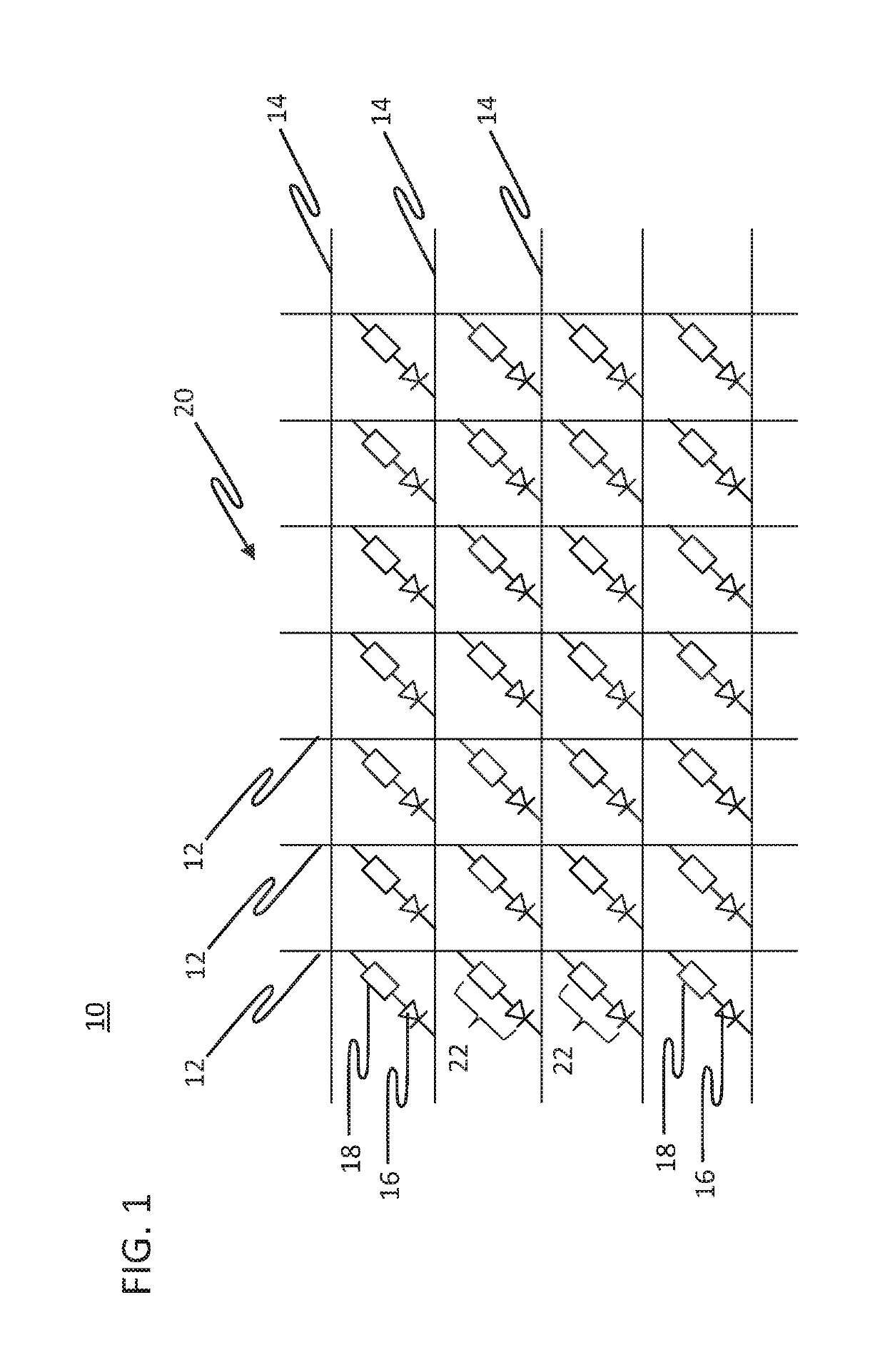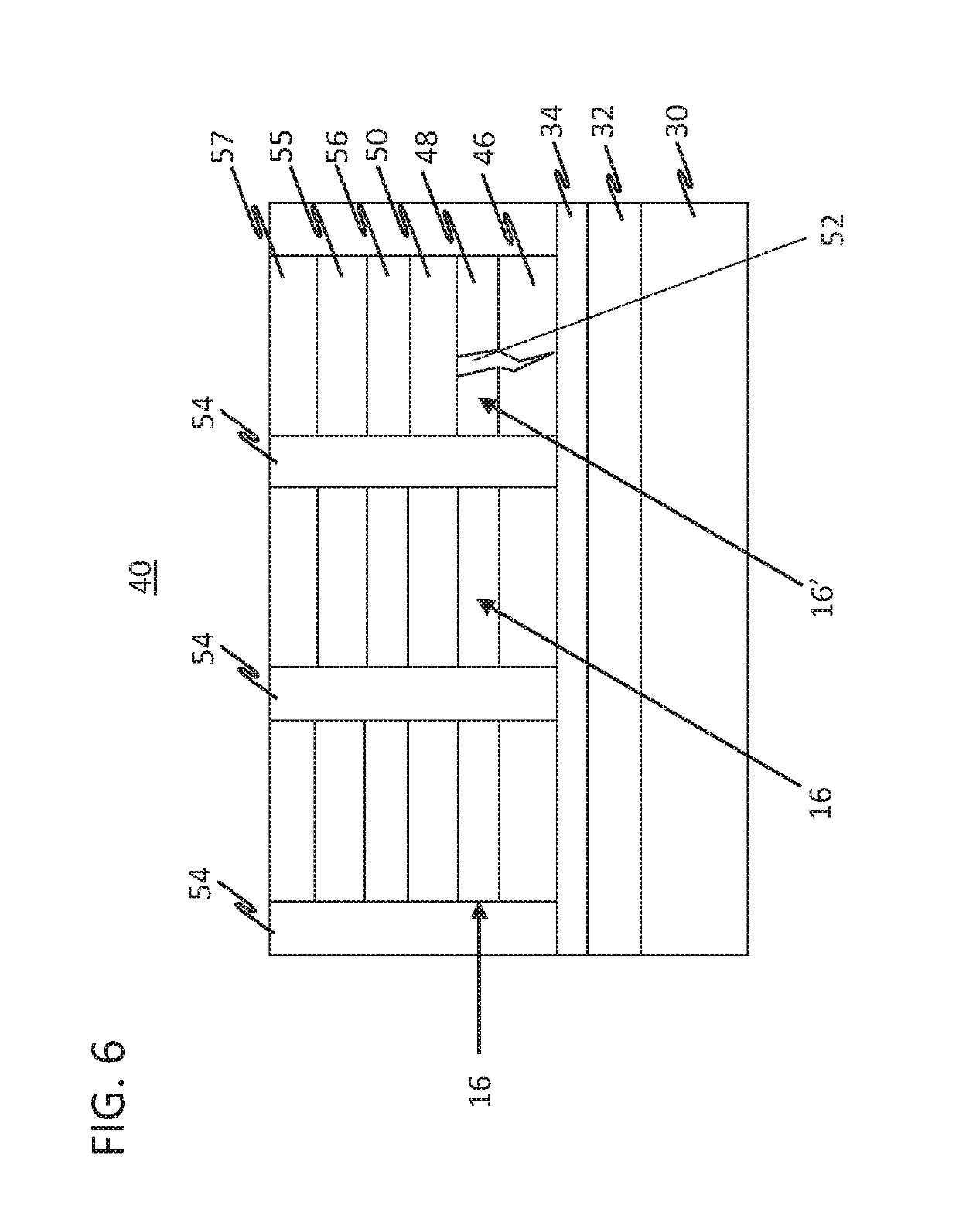Phase change memory array with integrated polycrystalline diodes
a technology of phase change memory array and polycrystalline diodes, which is applied in the field of semiconductor devices and processing, can solve problems such as device-to-device non-uniformity in the on characteristics of diodes, and achieve the effect of high resistive sta
- Summary
- Abstract
- Description
- Claims
- Application Information
AI Technical Summary
Benefits of technology
Problems solved by technology
Method used
Image
Examples
Embodiment Construction
[0023]In accordance with aspects of the present invention, structures and methods are provided that can employ diodes as selection devices. Selection devices can include a switch or configuration that permits selection of a path or state. In the present example, selection devices will be described in terms of access devices for memory cells. In particularly useful embodiments, selection devices can include diodes employed with phase change memory structures to function as memory cells. In accordance with aspects of the present invention, low-temperature polysilicon (poly-Si) (LTPS) prepared by excimer laser anneal (ELA) is a candidate for integrating diode selection devices with a phase-change memory (PCM) array. The diode has the potential to program multi-level memory cells. The PCM array with integrated LTPS-based selection diodes may be fabricated in back-end-of-line (BEOL).
[0024]To enable the advantages of polycrystalline diodes as selection devices, the adverse effects associa...
PUM
 Login to View More
Login to View More Abstract
Description
Claims
Application Information
 Login to View More
Login to View More - R&D
- Intellectual Property
- Life Sciences
- Materials
- Tech Scout
- Unparalleled Data Quality
- Higher Quality Content
- 60% Fewer Hallucinations
Browse by: Latest US Patents, China's latest patents, Technical Efficacy Thesaurus, Application Domain, Technology Topic, Popular Technical Reports.
© 2025 PatSnap. All rights reserved.Legal|Privacy policy|Modern Slavery Act Transparency Statement|Sitemap|About US| Contact US: help@patsnap.com



